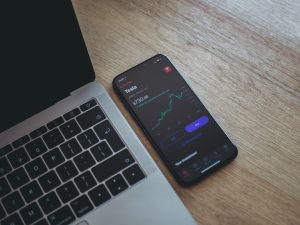Forex robots, also known as Expert Advisors (EAs), are automated trading systems that execute trades on behalf of traders. These robots are designed to analyze market data and make trading decisions based on predefined rules and algorithms. Backtesting is an essential process for evaluating the performance of forex robots. It involves simulating past market conditions to test the robot’s performance and profitability. In this article, we will guide you through the process of backtesting a forex robot.
Step 1: Understand the Basics of Backtesting
Before you start backtesting, it is essential to understand the basics of this process. Backtesting is the process of testing a trading strategy using historical data. It involves simulating the trading strategy using past market data to evaluate its performance. The goal of backtesting is to determine the profitability, risk, and efficiency of a trading strategy.
Step 2: Choose a Forex Trading Platform
To backtest a forex robot, you need to choose a trading platform that supports backtesting. There are several trading platforms available in the market, such as MetaTrader 4 (MT4), MetaTrader 5 (MT5), Ninjatrader, and TradingView. MT4 and MT5 are the most popular trading platforms among forex traders. They offer a wide range of features, including backtesting tools, automated trading, and technical indicators.
Step 3: Obtain Historical Data
To backtest a forex robot, you need to obtain historical data for the currency pairs you want to test. The data should include the opening and closing prices, high and low prices, and volume for each candlestick. You can obtain historical data from your trading platform or third-party vendors such as Dukascopy, Forex Tester, and Tickstory.
Step 4: Prepare the Forex Robot
Before you start backtesting, you need to prepare the forex robot for testing. This involves optimizing the robot’s settings, such as stop loss, take profit, and trading hours. You also need to ensure that the robot’s code is error-free and that it is compatible with your trading platform.
Step 5: Backtest the Forex Robot
Once you have prepared the forex robot, you can start backtesting. The backtesting process involves importing the historical data into your trading platform and running the robot on the data. You can run the robot on different time frames, such as hourly, daily, weekly, or monthly charts, to evaluate its performance under different market conditions.
Step 6: Evaluate the Results
After completing the backtesting process, you need to evaluate the results. The results should include the robot’s profit and loss, the number of trades executed, the win rate, the maximum drawdown, and the average trade duration. You also need to compare the robot’s performance against a benchmark, such as a buy-and-hold strategy or a simple moving average strategy.
Step 7: Optimize the Forex Robot
Based on the results, you may need to optimize the forex robot to improve its performance. This involves tweaking the robot’s settings, such as the stop loss, take profit, and trading hours, to achieve better results. You can also test different versions of the robot to find the best-performing one.
Conclusion
Backtesting is an essential process for evaluating the performance of forex robots. It involves simulating past market conditions to test the robot’s performance and profitability. The backtesting process involves choosing a forex trading platform, obtaining historical data, preparing the forex robot, backtesting the robot, evaluating the results, and optimizing the robot. By following these steps, you can backtest your forex robot and improve its performance.





